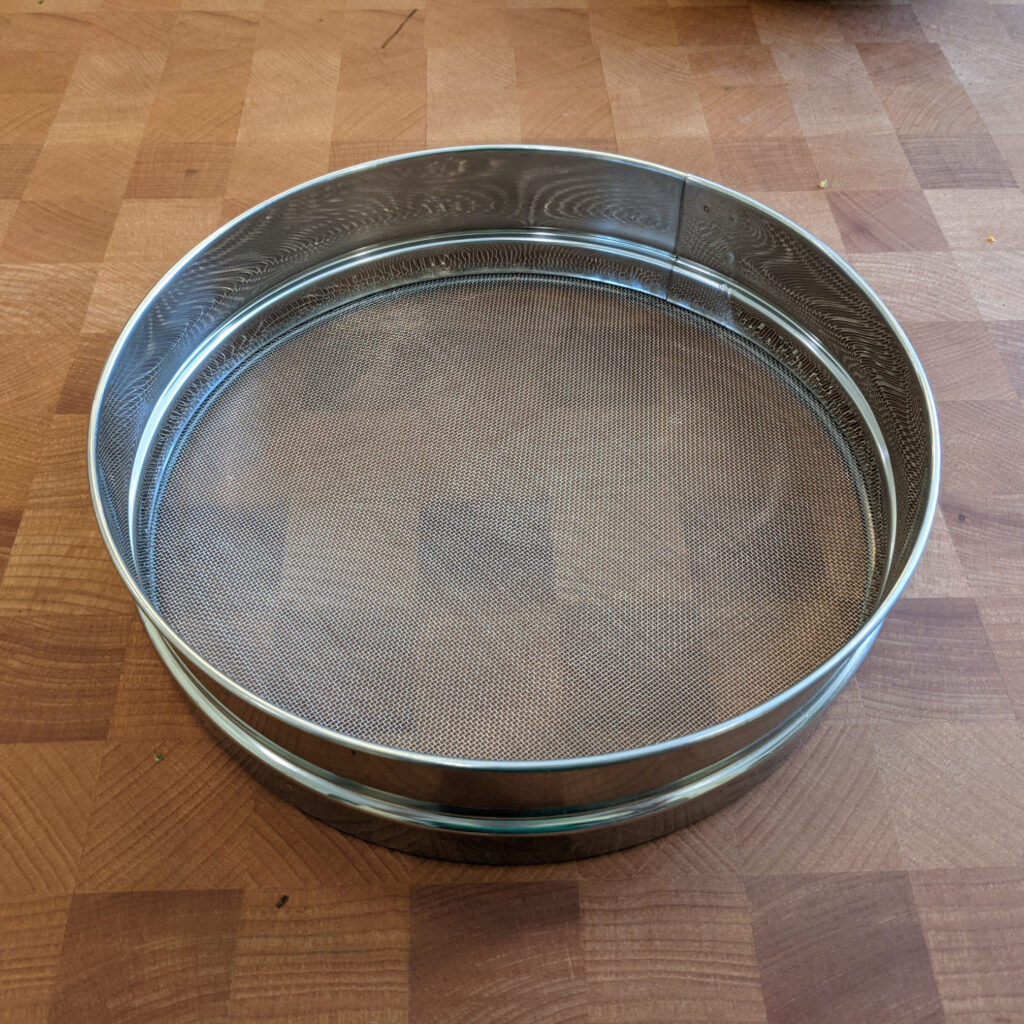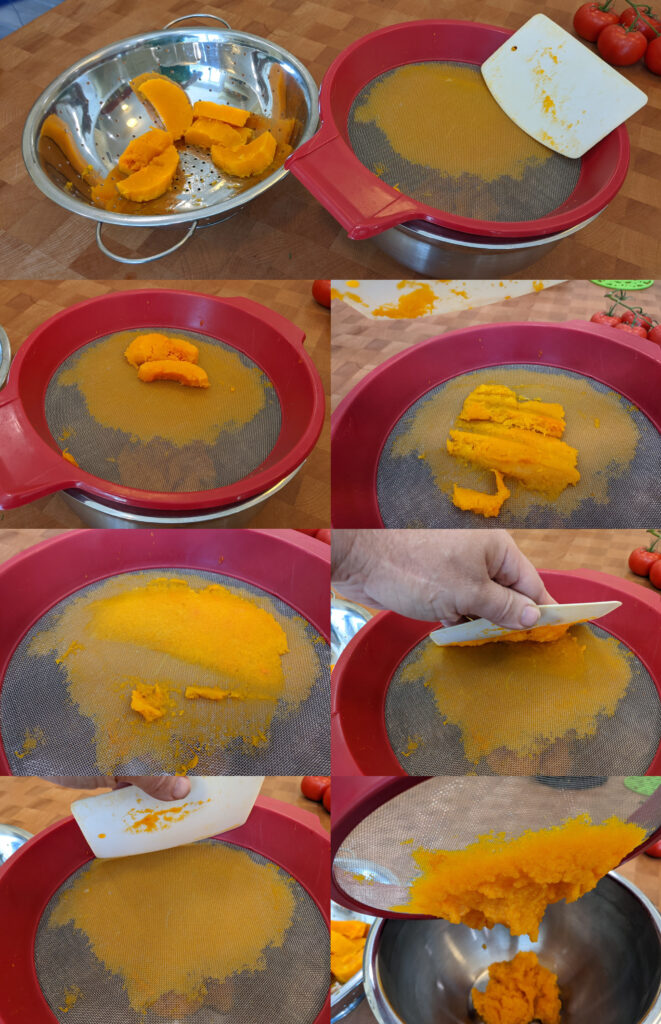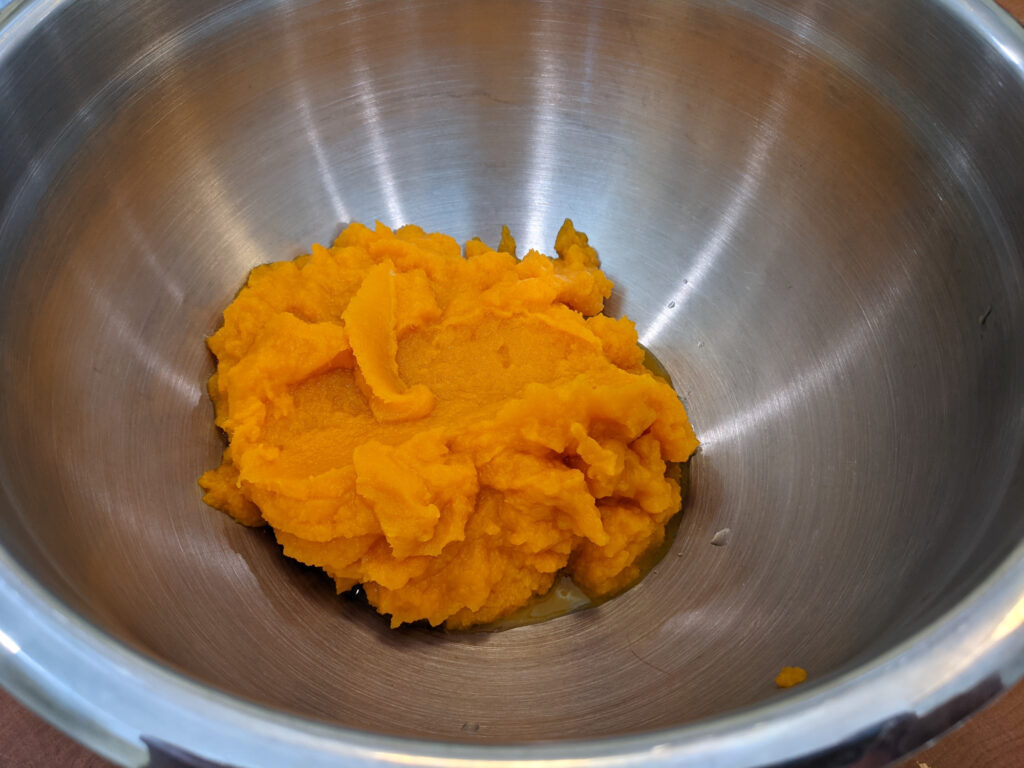Here’s something you probably never thought of. How did our ancestors make smooth purees and pastes? Sure, for some things, a mortar and pestle works fine. But what if you’re turning a few pounds of cooked pumpkin into a puree for making puddings or pies? Today, we’d reach for a food processor or blender. Yester-year, we’d reach for the sieve.

Above is a modern-made sieve, commonly sold as a sifter. Really, the only significant difference between a sifter and a sieve is that the sieve is strong enough to put pressure on the screen. Many modern-made flat sifters are quite suitable for use as sieves. Period sieves would have had wooden frames, and depending on the era, the screen may have been horsehair or another strong non-metallic fibrous material. There are frequent references in old documents to “hair sieves.”
To use a sieve, you would cook down whatever it is you would want to puree, until it was quite soft. Then you would spoon it onto the sieve then push and scrape it through with a spoon, scraper, or whatever else was best for the job at hand. Note that the food must be quite soft, or you will have to put more pressure on the screen, which could eventually damage or break it.

Above, I’m using a modern-made unit sold specifically for use as a sieve to puree steamed squash for a pie. It’s plastic and stainless wire, and tapered to fit inside large bowls. I have also used wire mesh strainers and a wooden spoon to good result for some jobs.

So, given that we now have food processors and blenders, why would you or I ever want to use a sieve? One reason is that a sieve tends to produce more consistent results. Since everything has to go through the mesh, there will never be un-pureed chunks or bits of fibrous matter. Another reason is that it will prevent certain things from passing through, like whole spices, pieces of tough skin, or tough fibers, which can be scraped off the top and disposed of. This is especially nice for things like chile sauces, where the skins can add a bitter flavor if they are just blended. And last, it can actually be faster and easier for some smaller jobs, mostly for cleanup. I actually find myself using a sieve two or three times as often as my food processor, either because it produces better results, or because cleaning the food processor would be more work.
So, when is the modern food processor better? For large amounts, and for times where you want to break up and puree tougher or harder things like seeds or skins. I would not want to use a sieve for gallons of pea soup. And it is not suitable for things like pesto. That would have been done in a large mortar and pestle.
1 thought on “The sieve, the old-school food processor.”